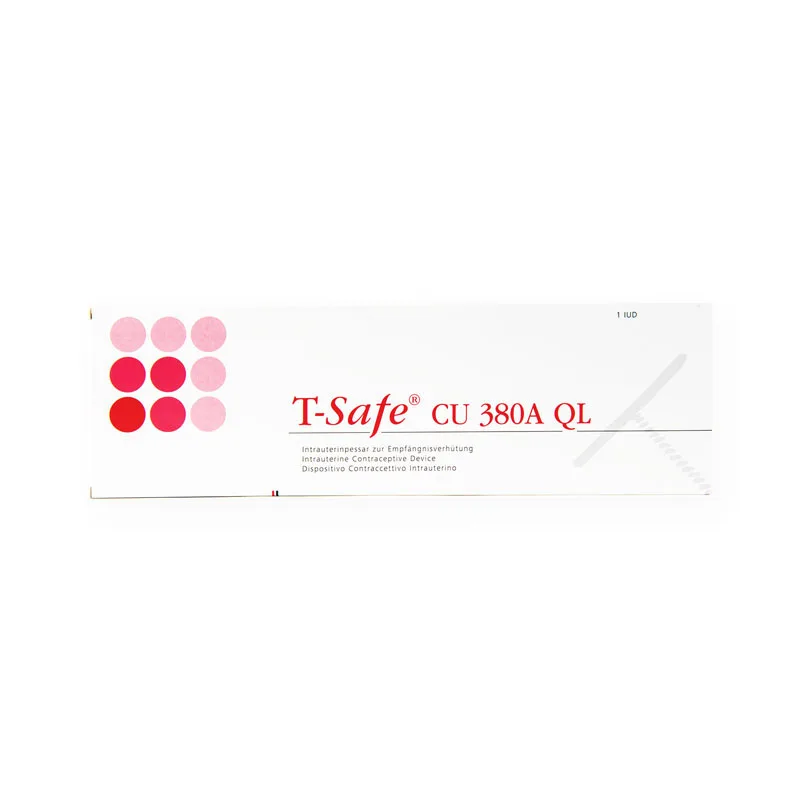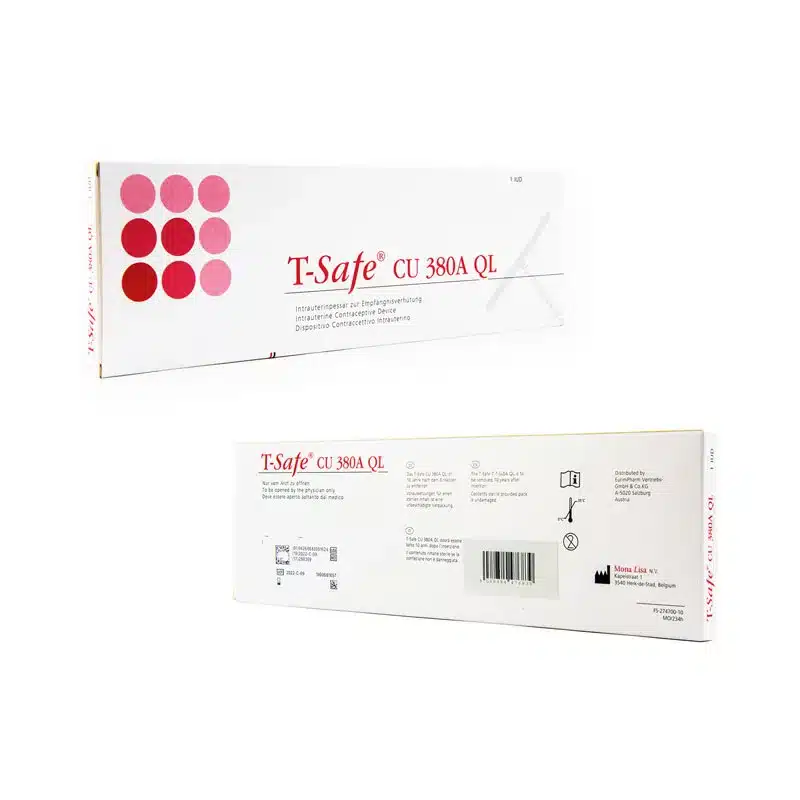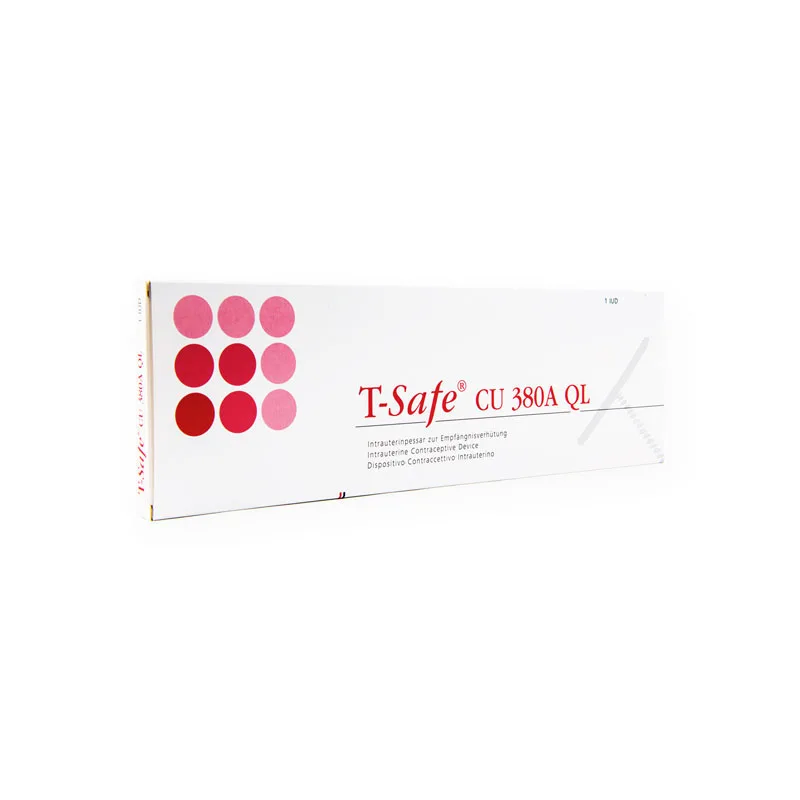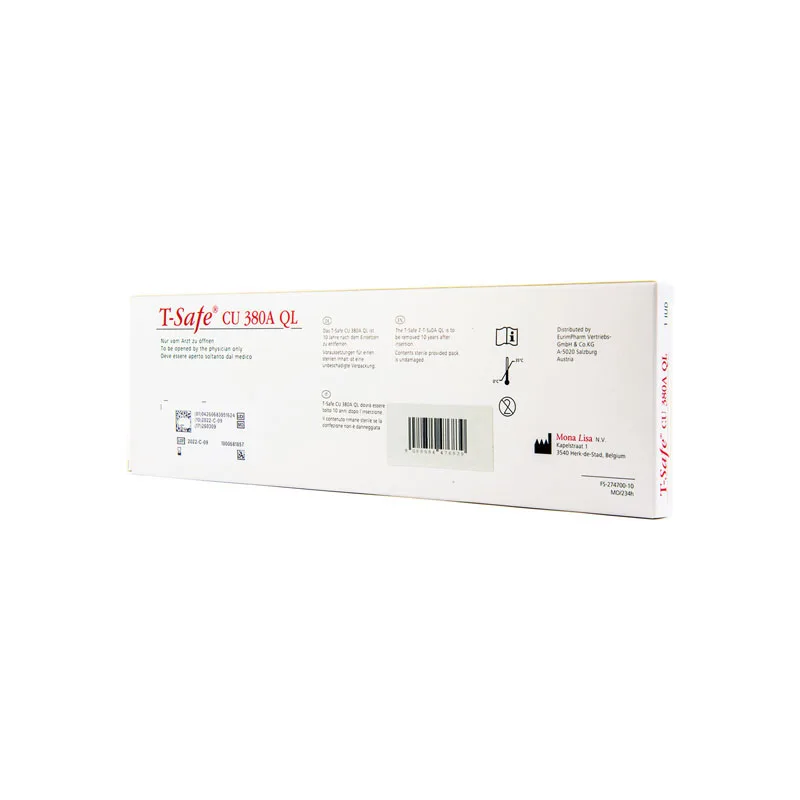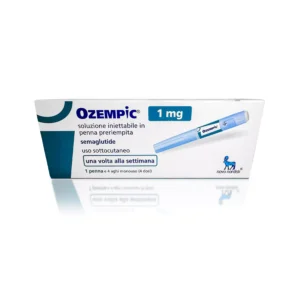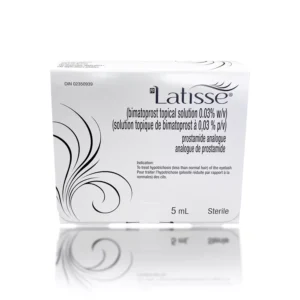SMB® TCu 380A with Safeload Clinical Studies and Real-World Outcomes
Numerous clinical trials and real-world outcomes support the efficacy and safety of the SMB® TCu 380A with Safeload. The device has been widely studied for its long-term reliability as a contraceptive option.
- Efficacy Rate: Clinical studies report a pregnancy rate of less than 1% per year for women using the TCu 380A IUD, making it one of the most effective non-hormonal contraceptive methods available.
- Duration: Offers long-term contraception for up to 10 years, reducing the need for frequent replacements.
- User Satisfaction: High satisfaction rates among women due to the long-term contraceptive benefit and non-hormonal nature of the device.
SMB® TCu 380A with Safeload Indications for Use
The SMB® TCu 380A with Safeload is an intrauterine device (IUD) designed for long-term contraception. It is suitable for women who are seeking a reliable, reversible, and hormone-free method of birth control.
- Contraceptive efficacy: Effective for up to 10 years following insertion.
- Non-hormonal: Offers a hormone-free option, suitable for women who prefer or require non-hormonal contraception.
SMB® TCu 380A with Safeload Contraindications:
- Pregnancy: The device should not be inserted in pregnant women.
- Infections: Women with current pelvic infections or a history of pelvic inflammatory disease (PID) should avoid this IUD.
- Uterine abnormalities: Women with uterine abnormalities or unexplained uterine bleeding should not use the SMB® TCu 380A.
SMB® TCu 380A with Safeload Dosage Information
The SMB® TCu 380A with Safeload is a copper intrauterine device (IUD), meaning it releases copper ions to prevent fertilization.
- Copper Surface Area: The IUD has a total surface area of 380 mm² of exposed copper, which enhances its contraceptive effect.
- Effective Period: Provides continuous protection for up to 10 years once inserted.
The device is inserted by a trained healthcare professional into the uterus, where it works by releasing copper ions that create an inhospitable environment for sperm, preventing fertilization.
SMB® TCu 380A with Safeload Side Effects and Precautions
Patients may experience side effects following the insertion of the SMB® TCu 380A with Safeload. It’s essential for practitioners to inform patients about potential complications and obtain informed consent.
- Common Side Effects:
- Cramps and discomfort: Mild to moderate cramping may occur during or after insertion.
- Irregular bleeding: Patients may experience heavier menstrual periods or spotting between periods.
- Backache: Mild back pain is also reported in some cases.
- Serious Side Effects:
- Pelvic infections: There is a small risk of pelvic infections, especially in the initial weeks following insertion.
- Expulsion: In rare cases, the IUD may be expelled from the uterus, necessitating reinsertion.
- Perforation: A very rare but serious risk involves the perforation of the uterus during insertion.
SMB® TCu 380A with Safeload Precautions:
- The IUD should not be used in women with untreated cervical or uterine infections.
- Avoid insertion in women with abnormal uterine anatomy.
- The device must be inserted and removed by a trained healthcare professional to reduce the risk of complications.
SMB® TCu 380A with Safeload Drug Interactions
The SMB® TCu 380A with Safeload IUD has no known drug interactions. However, the presence of pelvic infections or uterine abnormalities should be treated before insertion.
- No interaction with medications: Since it is a non-hormonal device, there are no significant interactions with other medications or hormonal treatments.
- Antibiotic considerations: In cases of infection or if there is a risk of infection following insertion, antibiotics may be prescribed by the healthcare provider.
SMB® TCu 380A with Safeload Contraindications
Several contraindications must be considered before recommending the SMB® TCu 380A with Safeload IUD:
- Active pelvic infections: The IUD should not be used in women who currently have or recently had pelvic infections.
- Unexplained vaginal bleeding: Women with undiagnosed vaginal bleeding should avoid using the IUD until the cause is determined.
- Pregnancy: The device is contraindicated for women who are pregnant or suspect pregnancy.
Administration and Usage Guidelines
The SMB® TCu 380A with Safeload IUD should be inserted by a healthcare professional in an aseptic setting to minimize infection risks.
- Insertion procedure: The device comes preloaded in the Safeload system, which facilitates precise and easy insertion. This system reduces the chances of perforation and expulsion by ensuring proper placement within the uterus.
- Removal: The IUD should only be removed by a healthcare provider. After 10 years, or if desired earlier, the IUD can be removed, and fertility is typically restored immediately.
Post-Insertion Care:
- Patients may be advised to avoid sexual activity or use alternative contraception for the first 7 days after insertion to ensure proper placement and to allow the copper ions to begin working effectively.
- Regular follow-up visits are recommended to check the placement of the IUD and address any complications.
